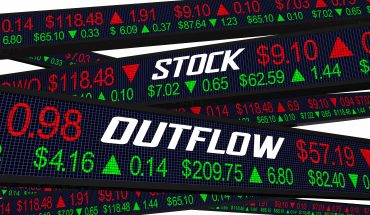
- AI Investment
- Private Equity
- S&P 500
U.S. Equities See $1.3B Outflow Despite S&P Record Highs
6 minute read

Stock market investors withdraw funds from broad U.S. equities while pouring record amounts into technology sector investments
Key Takeaways
- $1.3 billion in U.S. equity outflows marked the largest weekly selling since mid-April, even as the S&P 500 reached record highs, with institutional investors leading the exodus for seven of the past eight weeks.
- Tech stocks attract record inflows for the third consecutive week, receiving the highest single-week inflow in three years and fifth-largest since 2008, driven by AI investment momentum and strong corporate fundamentals.
- U.S. tech spending projected to reach $2.7 trillion in 2025 with 6.1% growth, indicating robust underlying demand despite short-term investor caution and valuation concerns.
Introduction
Institutional investors turned net sellers of U.S. equities for the first time in three weeks, generating $1.3 billion in outflows despite the S&P 500 climbing to fresh record highs. The contradiction between market performance and investor behavior signals a strategic shift in portfolio allocation as clients continue purchasing ETFs while selling individual stocks.
The selling activity spans across all major client groups, with institutions driving the largest portion of outflows after seven weeks of net selling in the past eight-week period. This divergence between price action and fund flows reflects growing uncertainty about valuations and market sustainability at current levels.
Key Developments
Investment patterns reveal a clear preference for diversified exposure over stock-picking strategies. Large and small-cap stocks attracted inflows while mid-cap securities experienced outflows, suggesting investors favor either established market leaders or higher-growth potential companies.
Sector rotation accelerated with eight sectors experiencing net selling, led by Industrials and Real Estate, both recording four consecutive weeks of outflows. Utilities face particular pressure with six weeks of consecutive selling amid Congressional uncertainty over reconciliation legislation.
Technology stocks bucked the broader selling trend, capturing the most inflows for three straight weeks. The sector received its highest inflow in three years, representing the fifth-largest single-week injection since 2008. Financials and Consumer Discretionary also attracted buying interest following better-than-expected bank stress test results.
Market Impact
ETF flows rebounded with their largest inflow since mid-April as investors added positions across Blend, Value, and Growth strategies. This marks a reversal from two weeks of net selling in Growth ETFs, indicating renewed confidence in momentum-driven investments.
Energy markets experienced sharp volatility with Energy ETFs recording their largest outflows in ten weeks. WTI crude prices dropped 13% following ceasefire developments between Iran and Israel, though subsequent escalation of tensions quickly reversed these gains and raised concerns about global shipping routes.
The disconnect between record market highs and institutional selling creates potential support levels as corporate buyback activity exceeds seasonal patterns for the fourth consecutive week. This corporate demand provides a floor for equity prices despite reduced institutional participation.
Strategic Insights
The technology sector’s resilience amid broader selling reflects fundamental shifts toward artificial intelligence and cloud infrastructure investments. Major corporations continue aggressive AI spending with software spending projected to rise 10.7% in 2025 according to Reuters, supporting continued inflows into technology stocks.
Corporate restructuring accelerates as companies streamline operations for AI integration. Dell reduced its workforce by 10% while Intel announced $10 billion in cost reductions and workforce cuts exceeding 15%. These moves reflect strategic pivots toward AI-centric business models rather than economic distress.
The concentration of capital in Big Tech partnerships, including the $500 billion Stargate AI infrastructure venture, intensifies competitive dynamics between proprietary and open-source AI development. This consolidation creates clear winners and losers in the technology ecosystem.
Expert Opinions and Data
Market analysts note the unusual divergence between institutional selling and retail buying behavior. Retail investors maintained their buying streak for 17 consecutive weeks, including one of the largest injections in market history, while hedge funds made their first net purchase since February.
Financial institutions demonstrate strong technology adoption intentions, with 80% planning increased technology spending over the next two years. Focus areas include fraud detection, digital banking platforms, and advanced data analytics capabilities.
The projected $2.7 trillion in U.S. technology spending for 2025 represents 6.1% growth from current levels, supporting analyst views that underlying technology demand remains robust despite short-term valuation concerns and investor rotation patterns.
Conclusion
The simultaneous occurrence of record equity outflows and technology sector inflows reflects a market in transition, with investors favoring targeted exposure over broad market participation. Corporate America’s continued commitment to AI and digital transformation provides fundamental support for technology investments despite institutional caution.
Current market dynamics suggest a bifurcated investment environment where sector-specific opportunities coexist with broader market skepticism. The sustainability of this divergence depends on whether technology earnings can justify current valuations and continued investor confidence.








